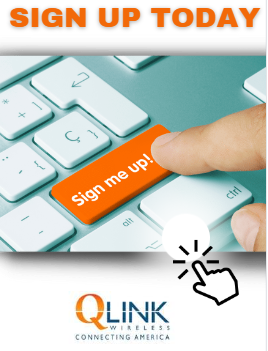What is the Supplemental Nutrition Assistance Program?
The Supplemental Nutrition Assistance Program (SNAP), formerly known as Food Stamps, is among the leading federal nutrition assistance programs in the U.S. The program provides nutritional support to low-income individuals and households, including low-income seniors and people with disabilities who live on a fixed income. If you’re eligible, you’ll get a monthly stipend, which goes to your Electronic Benefits Transfer (EBT) card.
The financial amount you receive from SNAP varies based on the size of the family, income, certain expenses, and sometimes certain deductions. An EBT card works like a debit card. With it, you can purchase foods that the program permits at retail stores that accept EBT. Most stores that accept EBT are grocery stores, farmers’ markets, and discount variety stores, such as Dollar Tree.
You can receive SNAP in all 50 states, including Guam, and the U.S. Virgin Islands. However, if you live in Alaska, Hawaii, Guam, or the U.S. Virgin Islands, you may be subject to different program eligibility requirements. Program names also differ depending on the state in which you reside. For example, SNAP is called CalFresh in California, while Idaho still refers to it as Food Stamps.
Who is Eligible for the Supplemental Nutrition Assistance Program?
You may apply for EBT if you meet SNAP’s eligibility requirements. Rules for applying are set at the federal level and are interchangeable across each state. However, states can modify SNAP benefits based on regional economic circumstances, among other factors.
What Are the Requirements to Apply for EBT?


You must meet three eligibility tests for the Supplemental Nutrition Assistance Program:
- Gross Monthly Income
- Net Income
- Assets
Gross Monthly Income
The total monthly household income must be at or below 130% of the poverty line before taxes, deductions, and additional income like social security, unemployment, or pension income is taken into effect. The monthly stipend for each household gets calculated by the household income and size. Some individuals in your home may be exempt from the gross monthly income criteria. These include:
- Persons aged 60 and older
- Persons with disabilities
- Individuals who are eligible because they participate in another economic security program
Net Income
The net income, after all the deductions from your gross income are applied, should be at or below the poverty line. Again, families with members who have a disability and get disability payments, or age 60 and older may only need to meet the net income test vs the monthly income test.
Assets
Assets are considered available resources, like the funds in your checking and savings account, that can be used to purchase foods. If it is not accessible, like your house or retirement savings, it isn’t considered an asset. A low-asset household does not exceed $2,000 ($3,000 if an elderly or disabled person is a member).
Here’s How to Apply for the Supplemental Nutrition Assistance Program
You can apply one of three ways:
- Fill out a paper application at a SNAP office and submit it on the same day. Alternatively, you can mail it, or scan and email the application to the office.
- Submit an online application through your state’s application website. Each state has a unique application form. Find out if you can apply online in your state.
- There may be a way to apply by telephone in your state. If so, make sure to follow your state’s instructions when applying by phone.
Gather all your information. You will need several items to apply:
- Identification
- Proof of citizenship
- Proof of residence
- Records of earned and unearned income
- Medical expenses, if applicable, or proof that you’re caring for an elderly/disabled household member
- Household expenses
- Proof of disability, if applicable, or proof that you’re caring for a disabled household member
- Proof of school attendance, if applicable
When filling out an application, make sure all the information is accurate and truthful.
When Will You Receive SNAP Benefits?
It goes without saying that the sooner you submit the application, the sooner you receive your benefits. SNAP benefits are generally given out no later than 30 days of submitting your application. If you need immediate assistance, you may receive benefits as quickly as seven days.
What Can I Buy After I Apply for EBT?
Once you qualify for the Supplemental Nutrition Assistance Program, you can use your EBT card just like a debit card to buy:
- Produce (fruits and vegetables)
- Meat, poultry, and fish
- Dairy products
- Loaves of bread and cereals
- Snack foods
- Seeds, beans, legumes, grains
There are several items that you can’t buy with your EBT card. These include:
- Alcohol or liquor, even at stores that accept EBT
- Cigarettes and tobacco
- Non-food items (i.e., pet food, makeup, household items, vitamins, supplements, medications, etc.)
- Foods that are hot and ready for immediate consumption/hot at the point of purchase, such as rotisserie chicken, deli foods, French fries, etc. are also not permitted. As a result, EBT cards can’t be used to buy fast food in most states, but each state has the power to permit residents to use their EBT cards to purchase fast food. There are also exemptions. Elderly, homeless, and disabled persons can purchase hot meals at authorized restaurants.
You May be Eligible for Lifeline and/or ACP
Do you qualify for SNAP? Then you may be eligible for one of two government assistant programs: Lifeline and the Affordable Connectivity Program. Q Link Wireless is one of the leading providers of the Lifeline program and Affordable Connectivity Program (ACP).
Lifeline is a government program created by the Federal Communications Commission (FCC) during the Reagan administration. The program provides discounts on wireless phone service to low-income individuals and households.
ACP is a government program that was created by the Universal Service Administration Company (USAC) with FCC oversight. Like Lifeline, ACP provides discounts on monthly broadband services and connected internet devices to low-income households and individuals.
A defining difference between these programs is the incoming requirements. For example, you may qualify for the Lifeline Program if your total household income is at or below 135% of the poverty level. Alternatively, you can apply for ACP if your total household income is at or below 200%.
Learn more about the Lifeline Program.
Learn more about the Affordable Connectivity Program.
At Q Link Wireless, we provide both government benefit programs with FREE UNLIMITED Data, Talk, and Text on one of America’s largest 4G LTE/5G networks.
Do you have 5 minutes?
Sign up with Q Link Wireless
&
Find out if You Qualify.
If you have additional questions, feel free to contact us at 1-855-754-6543 . A Q Link Wireless representative will be happy to assist you!





